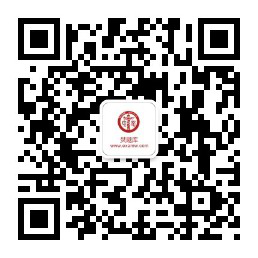The forger’s greatest advantage is that many buyers wait years before opening their fraudulent
类型:学习教育
题目总量:200万+
软件评价:
下载版本
问答题The forger’s greatest advantage is that many buyers wait years before opening their fraudulent bottles, if they open them at all. Bill Koch told me that he owns wine that he has no intention of ever drinking. He collects bottles from certain vineyards almost as if they were baseball cards, aiming to complete a set. “I just want a hundred and fifty years of Lafitte on the wall,” he said. He would hesitate before consuming the harder-to-come-by vintages, because to do so would render the set incomplete, and also because the rarest old wines often come not from the best vintages but from the worst. Historically, when good vintages were produced, collectors would lay them down to see how they would age, Koch explained. But when renowned vineyards produced mediocre vintages, people would drink them soon after they were bottled, making the vintage scarce.
The second great advantage for wine forgers is that when collectors do open fraudulent bottles, they often lack the experience and acute sense of taste to know that they have been defrauded. To begin with, even genuine old wines vary enormously from bottle to bottle. “It’s a living organism,” Sotheby’s Serena Sutcliffe told me. “It moves, it changes, it evolves-and once you’re into wines that are 40, 50, 60 years old, even if the bottles are stored side by side in similar conditions, you will get big differences between bottles.”
Studies suggest that the experience of smelling and tasting wine is extremely susceptible to interference from the cognitive parts of the brain. Several years ago, Frédéric Brochet, a Ph. D. student in oenology at the University of Bordeaux, did a study in which he served 57 participants amid range red Bordeaux from a bottle with a label indicating that it was a modest vendee table. A week later, he served the same wine to the same subjects, but this time poured from a bottle indicating that the wine was a grand cru. Whereas the tasters found the wine from the first bottle “simple”, “unbalanced” and “weak”, they found the wine from the second “complex”, “balanced” and “full”. Brochet argues that our “perceptive expectation” arising from the label often governs our experience of a wine, overriding our actual, sensory response to whatever is in the bottle.
Thus there is a bolder kind of forger who actually substitutes one type of wine for another. He often works with genuine bottles bearing genuine labels, obtaining empties from restaurants or antique shops, filling them with another type-or types-of wine, and replacing the cork and the capsule, assuming that the status-conscious buyer will never taste the difference. And, in many cases, this assumption is right. Sutcliffe believes that the vast majority of fake wines are happily enjoyed. Rajat Parr, a prominent wine director who oversees restaurants in Las Vegas, told me that several years ago, some of his customers ordered a bottle of 1982 Pttrus, which can sell in restaurants for as much as 6,000 dollars.
The second great advantage for wine forgers is that when collectors do open fraudulent bottles, they often lack the experience and acute sense of taste to know that they have been defrauded. To begin with, even genuine old wines vary enormously from bottle to bottle. “It’s a living organism,” Sotheby’s Serena Sutcliffe told me. “It moves, it changes, it evolves-and once you’re into wines that are 40, 50, 60 years old, even if the bottles are stored side by side in similar conditions, you will get big differences between bottles.”
Studies suggest that the experience of smelling and tasting wine is extremely susceptible to interference from the cognitive parts of the brain. Several years ago, Frédéric Brochet, a Ph. D. student in oenology at the University of Bordeaux, did a study in which he served 57 participants amid range red Bordeaux from a bottle with a label indicating that it was a modest vendee table. A week later, he served the same wine to the same subjects, but this time poured from a bottle indicating that the wine was a grand cru. Whereas the tasters found the wine from the first bottle “simple”, “unbalanced” and “weak”, they found the wine from the second “complex”, “balanced” and “full”. Brochet argues that our “perceptive expectation” arising from the label often governs our experience of a wine, overriding our actual, sensory response to whatever is in the bottle.
Thus there is a bolder kind of forger who actually substitutes one type of wine for another. He often works with genuine bottles bearing genuine labels, obtaining empties from restaurants or antique shops, filling them with another type-or types-of wine, and replacing the cork and the capsule, assuming that the status-conscious buyer will never taste the difference. And, in many cases, this assumption is right. Sutcliffe believes that the vast majority of fake wines are happily enjoyed. Rajat Parr, a prominent wine director who oversees restaurants in Las Vegas, told me that several years ago, some of his customers ordered a bottle of 1982 Pttrus, which can sell in restaurants for as much as 6,000 dollars.
参考答案:
答案解析:
涉及考点
2022翻译二级笔译实务考试大纲
第一章 英译汉
3、商业管理类
相关题库
| 题库产品名称 | 试题数量 | 优惠价 | 免费体验 | 购买 |
|---|---|---|---|---|
| 2022年翻译二级《英语笔译实务》考试题库 | 148题 | ¥98.00 | 免费体检 | 立即购买 |
你可能感兴趣的试题
- · 中国是一个地域辽阔,有着数千年悠久历史的多民族国家,有着秀丽的自然风光查看答案
- · Debt Financing The most common source 查看答案
- · Since the earliest times in England, the traveler’s inn has always been a warm查看答案
- · If I have called in the cuckoo to illustrate the ordinary man’s ignorance,查看答案
- · 咚咚锵!咚咚锵(Dong dong dong clang)!这喧闹的锣鼓声,不仅出现在中国新年的欢庆中查看答案

微信扫码关注焚题库
-
历年真题
历年考试真题试卷,真实检验
-
章节练习
按章节做题,系统练习不遗漏
-
考前试卷
考前2套试卷,助力抢分
-
模拟试题
海量考试试卷及答案,分数评估
